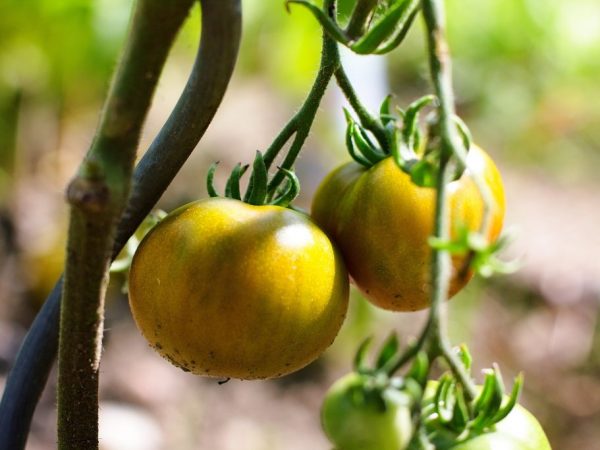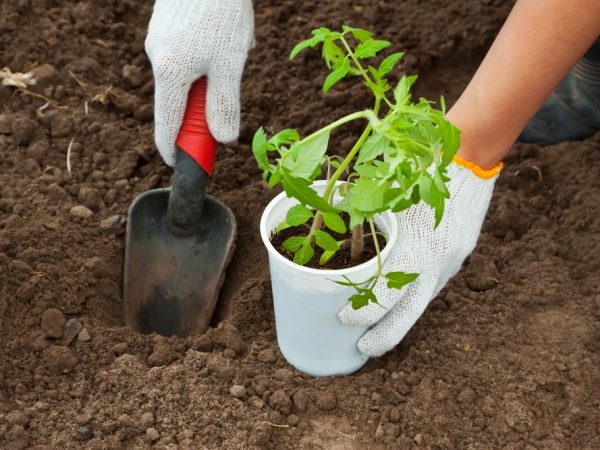Description of tomato Honey Giant
This tomato variety is distinguished not only by its aromatic taste and juiciness, but also by its excellent resistance to negative external factors. Its impressive size, the ability to use it in the preparation of various dishes and resistance to changeable weather make the Honey Giant tomato very popular among farmers - both amateurs and professionals.

Description of tomato Honey Giant
Characteristics of the variety
This tomato variety is medium early. Introduced in 2001, the Honey Giant has become a breeder's product and has received many qualities for which farmers love and appreciate it.
Description of the bush
A feature of the bush is that it is tall (about 1.5 m), so it needs a support. From ripening to planting, no more than 100 days pass, and plants can be grown both in open ground and in greenhouses.
Description of the fetus
Judging by the description of the gardeners, at least 4 kg of tomatoes ripen on each bush, the large and juicy fruits of which can be both sent for sale and successfully used for food. The fruits are ideal for both salads and pickling. As for the production of juice or tomato paste, these products are not made from the Honey Giant.
It is quite simple to distinguish fruits from other varieties of tomatoes - they all have a yellow thin skin with pinkish pulp inside. Each tomato contains at least 6% dry matter, as well as a large amount of minerals and vitamins. Slightly flattened, fruits can weigh between 300 and 400 grams.
Dignity
It is worth noting that growing this variety has many advantages. These are such advantages as:
- high productivity;
- excellent taste;
- the ability to carry out transportation if necessary;
- excellent keeping quality (tomatoes can be stored for a long time);
- high resistance to various kinds of bacteria and diseases;
- tomatoes tolerate both heat and cold well.
disadvantages
According to the descriptions, only two stand out among the shortcomings. The first of them can be considered universal, since it applies not only to the Honey Giant, but also to other varieties of tomatoes. It is about the need to carefully care for the plant and bushes that need close attention. Relative whimsicality is quite normal, so if a gardener wants to get really big fruits, you will have to try.
The second drawback can be considered tall bushes, which are covered with large fruits and can easily break under the weight of ripe tomatoes. In this case, the best option would be props or trellises that can hold the plants.
Landing rules

The soil for planting must be well prepared
For planting tomatoes of the Honey Giant variety, you will certainly need a well-fertilized, fertile land. To obtain a high-quality harvest, it is necessary to prepare the soil by digging well and fertilizing it.During the autumn digging, you need to supply the earth with a mixture of lime (0.5 kg), manure (5-7 kg) and superphosphate (60 g).
In the spring, it makes sense to fertilize the soil again, enriching it with nitrogenous or potassium mixtures. 60-65 days before disembarkation, the seedlings must be placed in special containers. With the onset of warmth, the plants are placed according to the scheme: 4 bushes per 1 m2 The process of planting seedlings is very simple:
- a hole is made at least 20 cm deep;
- a seedling is neatly placed at the bottom of the hole;
- plants need to be watered;
- the hole with the seedling must be sprinkled with earth.
It is very important to take care of large bushes, therefore, branches with fruits are necessarily tied up, forming two stems. The large size of the plants is explained by the fact that such a tomato variety belongs to indeterminate, that is, those that have a long stem growth. Caring for a plant implies the obligatory removal of stepchildren, which is important to do, even if it takes a long time. Usually, this effort pays off with healthy plants and the ability to produce large, ripe tomatoes.
Care
The seedlings definitely need feeding, so it is important to fertilize them with mixtures that contain potassium and phosphorus. Tomatoes of this variety also require other important procedures, including:
- loosening;
- hilling;
- watering.
Loosening
Approximately every 10-12 days, or at least several times in 3 summer months, it is necessary to loosen the soil, improving air circulation in order to enrich the seedlings with oxygen. In the first 10-15 days after planting the plants, it is also advisable to loosen the soil as deeply as possible.
Hilling
This procedure is carried out 10-11 days after the seedlings are immersed in the soil. First you need to water the ground, and then huddle the wet soil.
After 15-20 days, hilling should be repeated to stimulate plant growth and improve their resistance to parasites and bacteria.
Watering
A timely water supply is also a prerequisite for a bountiful tomato crop. It is best to water the plants in the second half for, as well as during dry periods.
It is also necessary to water the tomatoes during the flowering period, before loosening the soil and after dry fertilization. It is important not to create high humidity, otherwise the giant tomato can get late blight.
Fight disease
The characteristic of this variety says that tomatoes are practically not susceptible to diseases. However, tomatoes also have their weak points - they can be attacked by thrips and melon aphids. For this reason, it is advisable to use the Bison preparation, which can prevent the appearance of parasites and protect the bushes from uninvited guests.
In addition to this product, you can also use mustard or ground pepper, which is diluted in the proportion - 1 spoon per 10 liters of clean water. The resulting composition must be sprayed with great care so as not to damage the leaves of the plant, therefore this procedure is done either early in the morning or after sunset.
Another problem that can arise is the whitefly invasion. They usually fight with it thanks to such a drug as Confidor. The characteristic of the variety confirms that this is an excellent choice for any gardener, the main thing is to know how to properly care for him.


